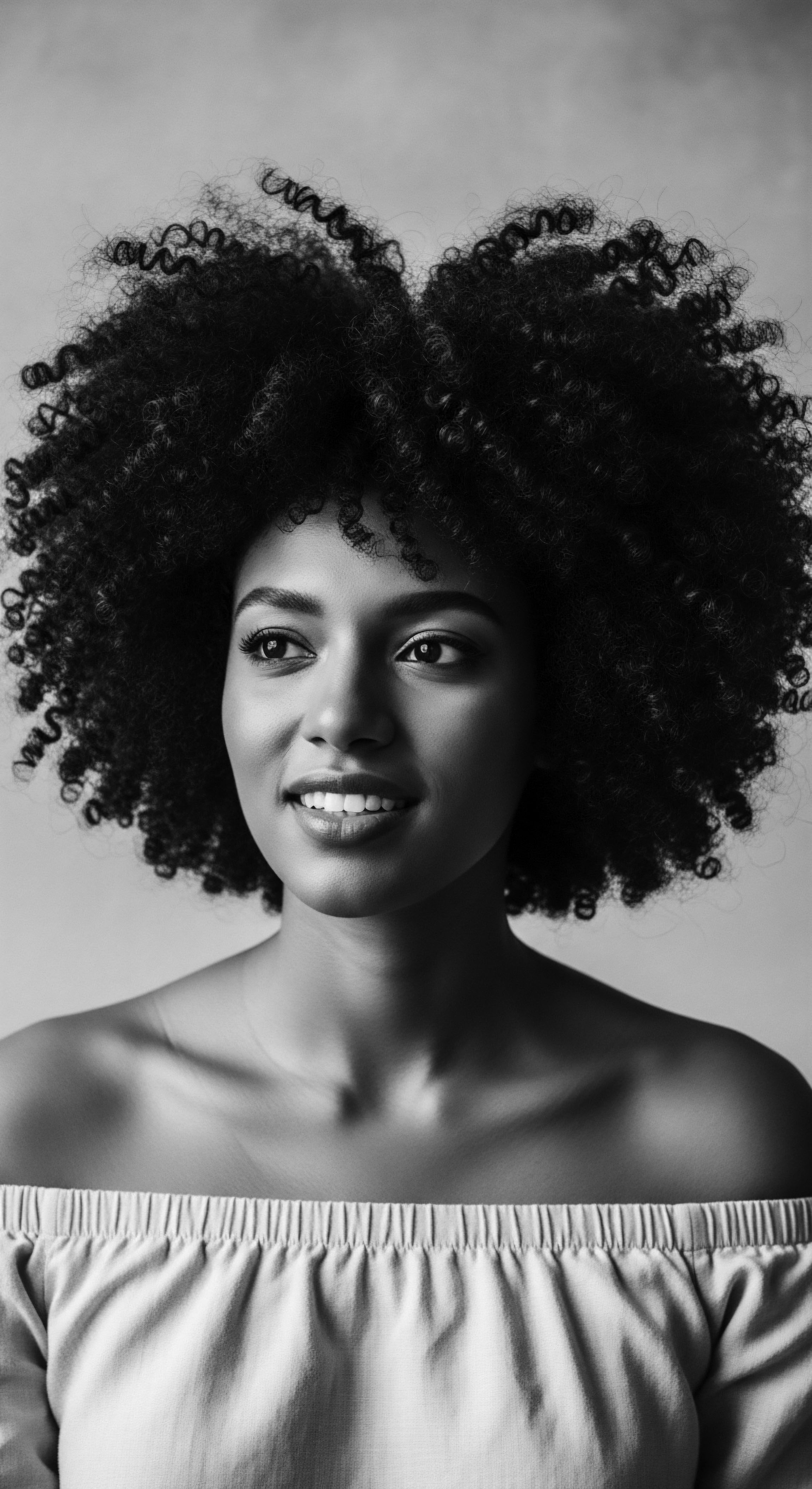
Fundamentals
The spirit of Roothea’s ‘living library’ begins its discourse with the foundational concept of Cultural Affirmation, an elemental truth often felt before it is articulated. At its simplest, this idea denotes the active acknowledgment, validation, and celebration of one’s inherited cultural identity and expressions. It is a deep resonance with the ways of one’s people, a conscious decision to uphold the practices, beliefs, and aesthetics that define a collective lineage. This is not merely about passive acceptance; rather, it represents a vibrant, ongoing declaration of belonging and self-worth, particularly within communities whose traditions have faced historical erasure or devaluation.
For the strands that crown us, especially those with the wondrous coils and intricate textures of Black and mixed-race heritage, Cultural Affirmation holds a profound significance. It is the understanding that the very structure of our hair, its natural inclination to coil and curl, carries within it stories of resilience and beauty stretching back through generations. This initial apprehension of Cultural Affirmation invites us to see our hair not as a mere biological outgrowth, but as a living archive, a tangible connection to the ancestral wisdom that shaped its care and adornment. The designation of Cultural Affirmation in this context becomes a gentle invitation to honor the inherent dignity of textured hair, recognizing its unique characteristics as a source of pride rather than a point of contention.
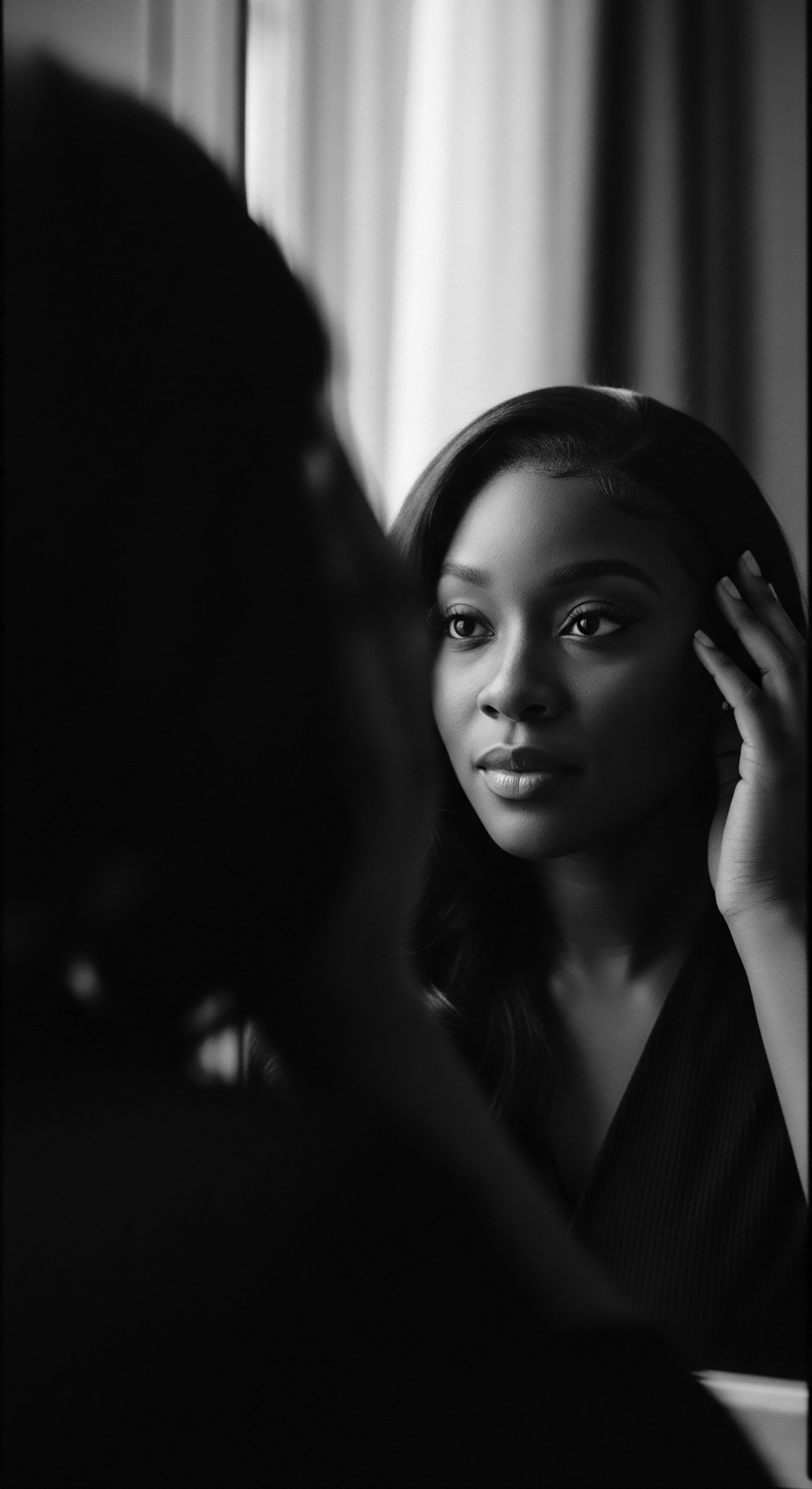
The Genesis of Self-Perception
The earliest stirrings of Cultural Affirmation often begin in childhood, through the tender rituals of hair care passed down from elder to youth. These moments, steeped in familial warmth and shared knowledge, are where the initial seeds of self-acceptance regarding one’s hair texture are sown. The very act of a grandmother meticulously parting coils for braids, or a mother carefully oiling a child’s scalp, transmits more than just technique; it conveys a silent, yet powerful, statement of worth. These interactions lay the groundwork for a personal connection to one’s hair, linking it to the larger familial and communal narrative.
The elucidation of Cultural Affirmation at this fundamental stage is akin to learning the first notes of an ancient melody. It teaches us that our hair, in its natural state, is inherently good, beautiful, and reflective of a rich heritage. This primary understanding helps to counter external pressures that might suggest otherwise, building an internal fortress of self-regard. The very definition of beauty begins to expand, encompassing the diverse forms and textures that are a birthright, a legacy from those who came before.
- Generational Transfer ❉ The passing down of hair care techniques and traditions from older to younger family members.
- Communal Bonding ❉ Hair styling as a shared activity that reinforces familial and community ties.
- Inherent Beauty ❉ The initial recognition that textured hair, in its natural state, possesses an intrinsic beauty and value.

Echoes from the Source ❉ Hair as Identity
From the earliest records of human civilization, hair has served as a powerful marker of identity, status, and spiritual connection. For countless African societies, hair was not merely an aesthetic feature; it was a profound symbol, a direct conduit to the divine, and a visual representation of one’s lineage and community standing. The precise delineation of hairstyles could indicate age, marital status, tribal affiliation, wealth, or even readiness for battle. This deep historical import provides a compelling background for the contemporary concept of Cultural Affirmation.
Consider the Dogon people of Mali, whose intricate hair traditions were deeply intertwined with their cosmological beliefs. Their hairstyles, often mirroring the spirals of the cosmos or the pathways of their ancestors, were not simply decorative; they were living expressions of their worldview. This ancient perspective offers a glimpse into the profound significance that hair held, a testament to its role in shaping communal identity and individual self-perception.
The care and adornment of hair were thus acts of cultural reinforcement, embodying the very spirit of affirmation long before the term was coined. The statement of Cultural Affirmation, then, begins with recognizing these ancient roots.
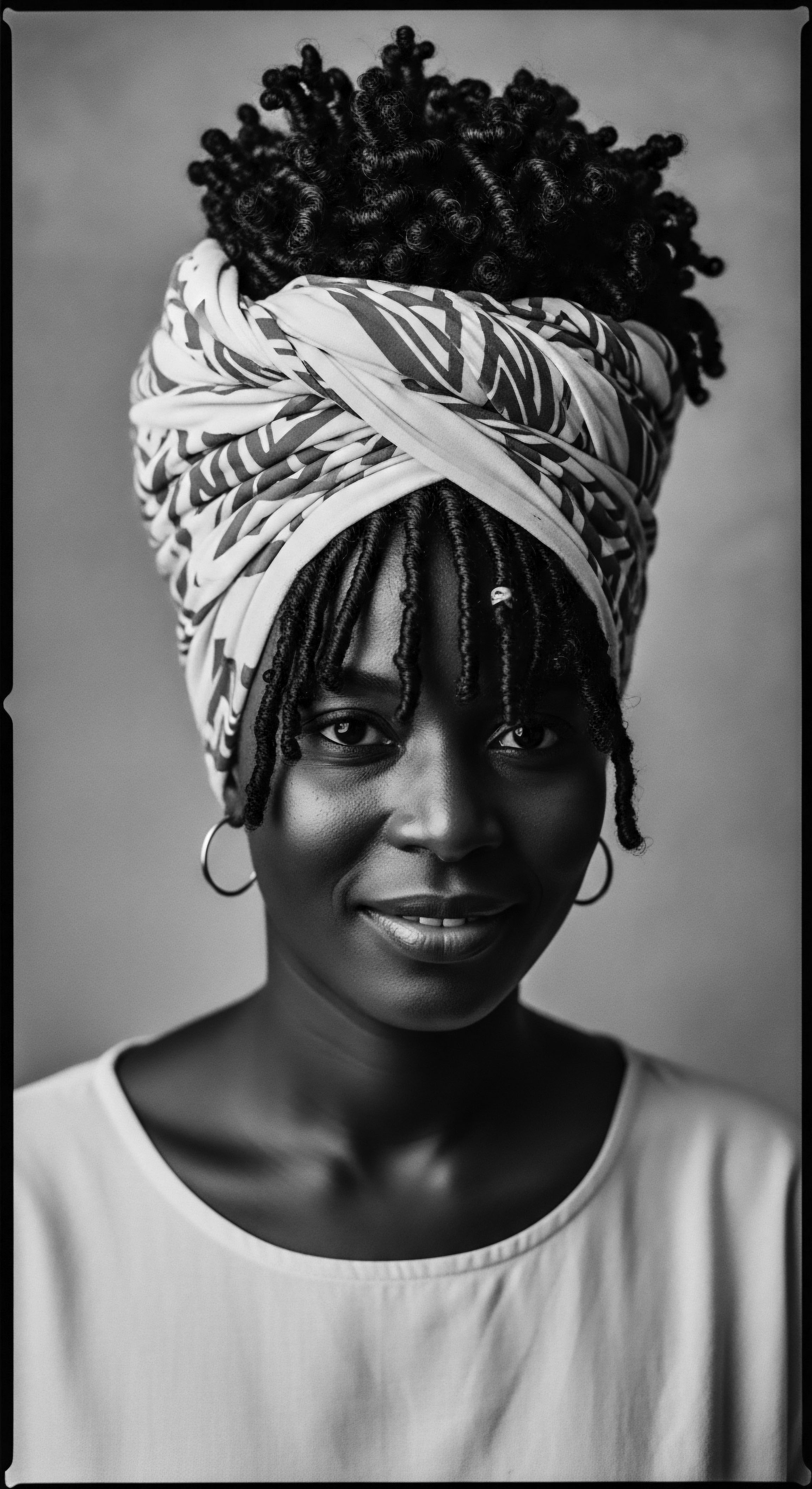
Intermediate
Moving beyond the initial apprehension, an intermediate understanding of Cultural Affirmation involves a deeper exploration of its active practice and its implications for textured hair heritage. Here, the concept transcends simple acceptance to become a conscious, deliberate act of validation and celebration, particularly in contexts where textured hair has historically been marginalized or misunderstood. This involves not only valuing one’s own coils and curls but also advocating for their inherent beauty and structural integrity within broader societal narratives. The explanation of Cultural Affirmation at this stage delves into the mechanisms by which historical wisdom and modern scientific understanding converge to strengthen this affirmative stance.
The tender thread of ancestral wisdom, often dismissed by Eurocentric beauty standards, finds its vindication in contemporary scientific inquiry. For instance, the traditional practice of oiling and sealing textured hair, a common ritual in many Black and mixed-race households, was historically understood as a way to maintain softness and pliability. Modern trichology now clarifies this ancestral wisdom, demonstrating how the unique elliptical shape of textured hair follicles and its coil pattern make it more susceptible to moisture loss.
The strategic application of oils and butters creates a protective barrier, preventing water evaporation and maintaining hydration within the hair shaft. This intersection of inherited knowledge and scientific validation solidifies the practical application of Cultural Affirmation, transforming routine care into a knowledgeable, purposeful act of heritage preservation.
Cultural Affirmation for textured hair bridges ancient wisdom with modern understanding, validating traditional practices through scientific insight.

The Tender Thread ❉ Living Traditions of Care
The daily and weekly rituals of caring for textured hair are potent manifestations of Cultural Affirmation. These practices, often passed down through generations, are far more than mere hygiene; they are acts of reverence, moments of connection to a lineage of care. From the careful detangling of coils to the precise application of ancestral ingredients, each step is imbued with meaning.
The very act of washing, conditioning, and styling becomes a mindful dialogue with one’s heritage, a living continuation of traditions that have sustained communities for centuries. The interpretation of these practices as cultural affirmation underscores their role in fostering a deep sense of self-worth and belonging.
Consider the enduring practice of hair oiling and deep conditioning, a common thread across diverse African and diasporic cultures. In many West African societies, shea butter, palm oil, and various plant extracts were revered for their nourishing properties, not just for hair but for skin and spiritual well-being. These ingredients, sourced from the earth, were understood to hold the life force of the land, transferring vitality to the body.
Today, the continued use of these traditional ingredients, alongside contemporary formulations, speaks to an unbroken chain of knowledge. The specification of Cultural Affirmation here lies in the conscious choice to honor these ancient remedies, recognizing their efficacy and their symbolic power in maintaining the health and vitality of textured hair.
| Traditional Practice (Heritage) Scalp Massage for Growth |
| Associated Ingredient/Method Finger-tip manipulation, natural oils (e.g. castor oil) |
| Modern Scientific Elucidation Stimulates blood circulation to follicles, delivers nutrients, reduces tension. Castor oil contains ricinoleic acid, a known anti-inflammatory. |
| Traditional Practice (Heritage) Protective Styling (Braids, Twists) |
| Associated Ingredient/Method Cornrows, twists, bantu knots, often with natural fibers |
| Modern Scientific Elucidation Minimizes manipulation, reduces breakage, retains moisture, shields hair from environmental stressors. |
| Traditional Practice (Heritage) Deep Conditioning/Masking |
| Associated Ingredient/Method Clay masks, herbal rinses (e.g. fenugreek, hibiscus), fruit mashes (e.g. avocado) |
| Modern Scientific Elucidation Provides intense hydration and nutrient delivery; strengthens hair shaft, improves elasticity, and reduces frizz. |
| Traditional Practice (Heritage) Hair Oiling and Sealing |
| Associated Ingredient/Method Shea butter, coconut oil, palm oil, often applied after moisturizing |
| Modern Scientific Elucidation Creates a hydrophobic barrier on the hair shaft, preventing moisture loss and providing lubricity to reduce friction and tangling. |
| Traditional Practice (Heritage) These parallels underscore how ancestral wisdom in hair care often aligns with contemporary scientific understanding, reinforcing the validity of inherited practices. |

Voicing Identity ❉ Hair as a Statement
Beyond personal practice, Cultural Affirmation finds its expression in the broader social sphere, where textured hair becomes a visible statement of identity and resistance. For generations, individuals with textured hair have faced pressures to conform to Eurocentric beauty norms, often leading to the concealment or chemical alteration of their natural coils. The conscious decision to wear one’s hair in its natural state, or in styles that celebrate its inherent texture, becomes a powerful act of defiance and self-designation. This public display of hair, unadulterated and unapologetic, is a direct challenge to historical biases and a vibrant declaration of cultural pride.
The meaning of Cultural Affirmation in this context is amplified by its communal impact. When one individual steps forward, confidently displaying their natural hair, it sends ripples of encouragement through the community. This collective act of visibility helps to reshape societal perceptions, slowly dismantling stereotypes and expanding the conventional understanding of beauty.
It is a shared journey towards collective liberation, where each strand, each coil, contributes to a larger narrative of empowerment and authenticity. The explication of this phenomenon reveals how personal choices contribute to a wider cultural shift.
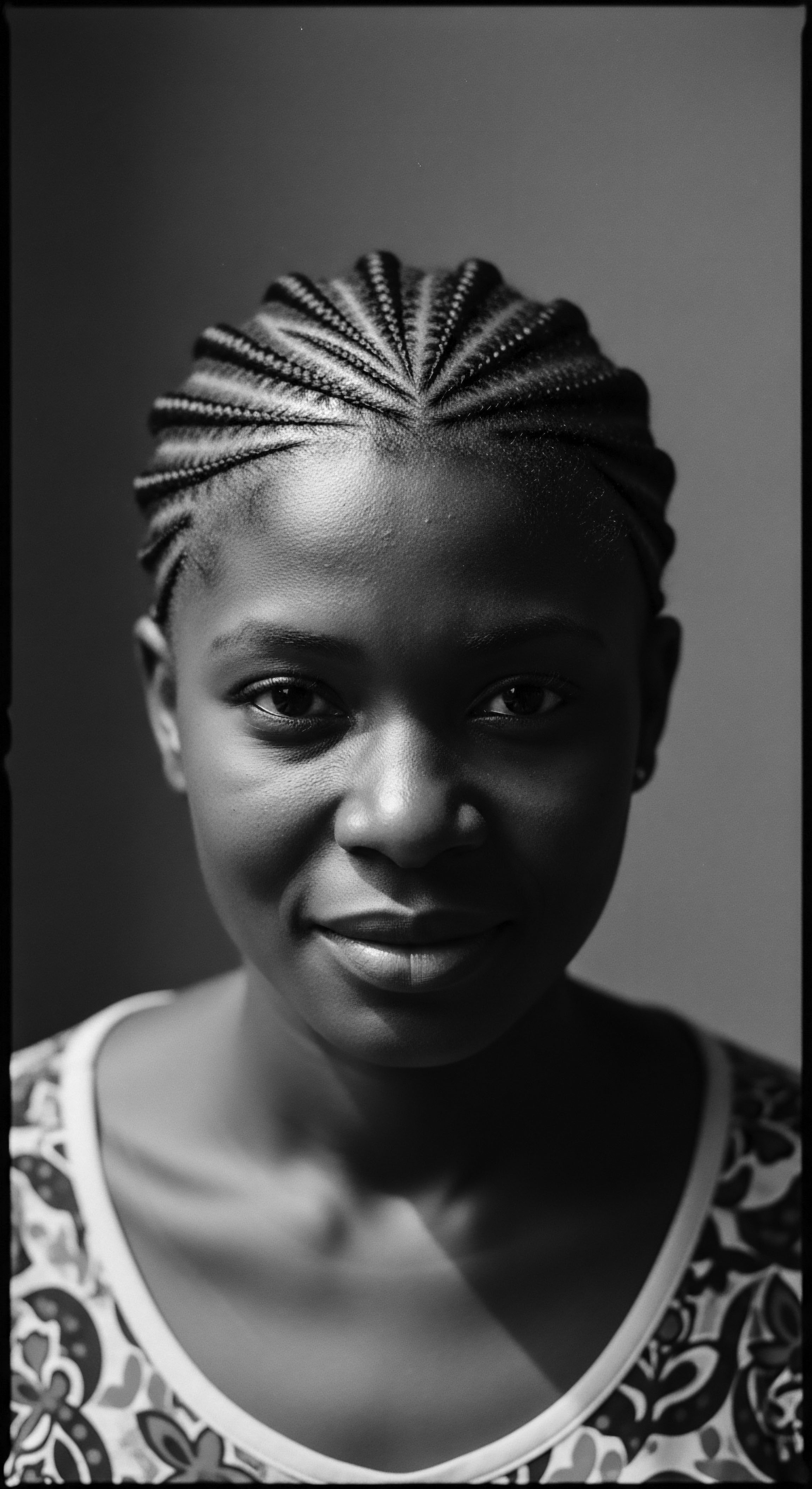
Academic
The academic elucidation of Cultural Affirmation, particularly concerning textured hair, transcends anecdotal observation to encompass rigorous interdisciplinary inquiry. This intellectual pursuit involves a meticulous examination of historical, sociological, psychological, and biological dimensions, revealing the profound and often complex interplay between identity, power, and corporeal expression. At its core, Cultural Affirmation is understood as a dynamic, agentic process by which individuals and communities actively assert and validate their inherited cultural frameworks, particularly when those frameworks have been systematically marginalized or denigrated. Its meaning is not static; it evolves through lived experience and collective memory, perpetually shaped by the currents of societal recognition and resistance.
For textured hair, this translates into a sustained commitment to valuing, preserving, and advocating for the distinct characteristics and historical significance of coils, kinks, and curls. This delineation of Cultural Affirmation highlights its critical role in psychological well-being and social justice, serving as a bulwark against internalized oppression and external pressures.
From an anthropological perspective, the phenomenon of hair as a site of cultural affirmation is deeply rooted in the historical experiences of the African diaspora. During the transatlantic slave trade and its aftermath, enslavers systematically stripped enslaved Africans of their cultural markers, including their hair traditions. Hair was often shaved, shorn, or neglected, severing a profound connection to identity and ancestral practices. Yet, even under the most brutal conditions, ingenuity and resilience prevailed.
The enslaved, and later their descendants, found clandestine ways to maintain and transmit hair care knowledge, often braiding intricate patterns that served multiple purposes beyond aesthetics. This enduring spirit of cultural preservation, even in the face of immense adversity, is a testament to the inherent human drive for affirmation. The historical trajectory of textured hair thus provides a compelling case study for understanding the deep significance of Cultural Affirmation.

The Unbound Helix ❉ Hair as a Vehicle for Resistance and Identity
The history of Black hair is replete with instances where its styling and care became a covert language of resistance and a powerful declaration of self. One compelling, though perhaps less commonly detailed, example comes from the period of American slavery, where hair braiding served as a sophisticated form of communication and a practical tool for survival. Enslaved women, drawing upon centuries of West African braiding traditions, would intricately braid patterns into their hair that were far more than decorative. These patterns often served as maps, delineating escape routes, marking safe houses, or even indicating the direction of the North Star.
Moreover, seeds and grains were sometimes braided into the hair, providing sustenance for long, perilous journeys to freedom. This practice transformed the act of hair styling into a profound act of agency and cultural survival, a testament to the enduring power of Cultural Affirmation in the face of unimaginable oppression.
This historical context provides a powerful lens through which to comprehend the enduring meaning of Cultural Affirmation. It was not merely about maintaining beauty; it was about preserving life, transmitting vital information, and upholding a connection to a stolen heritage. The meticulous work of braiding, often performed communally, reinforced bonds of solidarity and transmitted ancestral knowledge in a coded, secure manner. As documented by researchers like Dr.
Afiya Mbilishaka, who explores the psychological and spiritual dimensions of Black hair, these practices were crucial for maintaining mental fortitude and a sense of collective identity amidst dehumanization. (Mbilishaka, 2013). The intricate patterns, the shared moments of care, and the covert messages embedded within each braid exemplify the deep, practical application of Cultural Affirmation, showcasing how hair became a profound medium for expressing dignity and hope.
Hair braiding during slavery served as a coded language and practical survival tool, illustrating Cultural Affirmation as a dynamic act of resistance and heritage preservation.

Biopsychosocial Dimensions of Hair Affirmation
The scientific underpinning of Cultural Affirmation extends into the biopsychosocial realm, acknowledging that the physical characteristics of textured hair are inextricably linked to psychological well-being and social interaction. Biologically, the unique helical structure of textured hair, characterized by its elliptical cross-section and varying curl patterns, necessitates specific care practices to maintain its health and integrity. When these biological needs are understood and met through culturally resonant practices, it fosters a sense of competence and pride.
Psychologically, the acceptance and celebration of one’s natural hair texture have been shown to correlate with higher self-esteem and a stronger sense of identity among individuals of African descent. Studies have indicated that negative societal perceptions of textured hair can contribute to body image issues and racial identity confusion, underscoring the critical need for affirmative practices.
Sociologically, Cultural Affirmation manifests as a collective effort to challenge and dismantle discriminatory practices and policies that penalize natural hair. The recent proliferation of CROWN Acts (Creating a Respectful and Open World for Natural Hair) in various jurisdictions across the United States is a direct legislative outcome of this collective affirmation. These laws prohibit discrimination based on hair texture or protective hairstyles associated with race, representing a significant stride towards institutional recognition of textured hair as a legitimate and celebrated aspect of racial identity.
The impact of such legislation extends beyond legal protection; it sends a powerful message of validation, reshaping public perception and creating environments where textured hair can be worn without fear of professional or social reprisal. This societal shift, propelled by sustained cultural advocacy, underscores the transformative power of Cultural Affirmation.
- Hair Discrimination ❉ Systemic biases and practices that penalize individuals based on their natural hair texture or protective styles.
- CROWN Act ❉ Legislation designed to prohibit discrimination based on hair texture or protective hairstyles, a direct outcome of collective cultural affirmation.
- Psychological Impact ❉ The correlation between positive self-perception of textured hair and higher self-esteem, contrasting with the negative effects of discrimination.
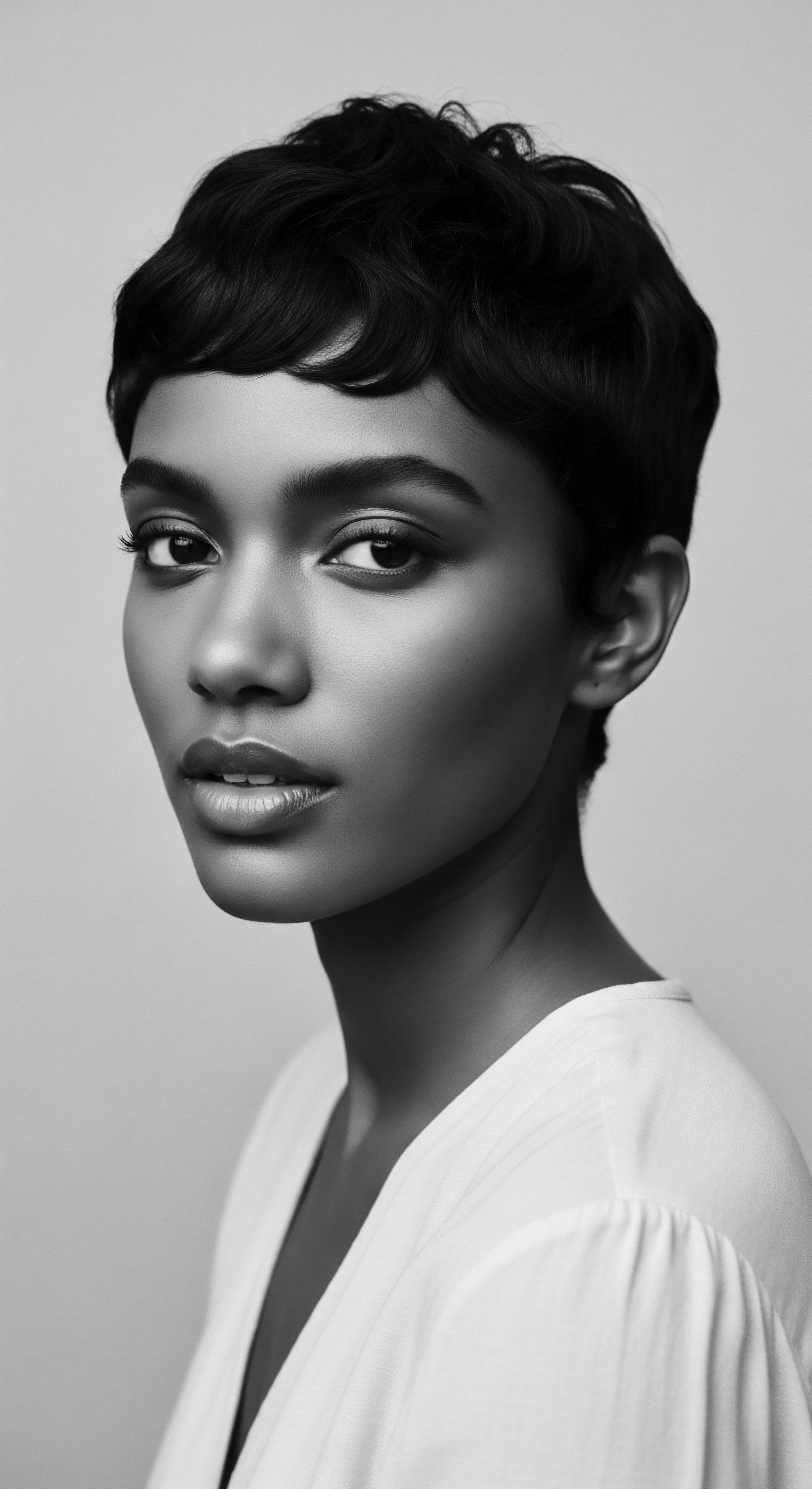
Ancestral Knowledge and Modern Science ❉ A Symbiotic Relationship
The academic pursuit of Cultural Affirmation also involves bridging the chasm often perceived between ancestral knowledge systems and contemporary scientific paradigms. Rather than viewing traditional practices as merely folkloric, a more sophisticated approach recognizes their empirical basis, refined through centuries of observation and adaptation. For example, the use of certain plant-based ingredients in traditional African hair care, such as Chebe powder from Chad or Ayurvedic herbs like Amla and Brahmi, is now being investigated by modern cosmetic science for their proven benefits in strengthening hair, promoting growth, and enhancing elasticity. This convergence provides a robust framework for understanding the efficacy of inherited practices, validating them not just culturally but scientifically.
The academic interpretation of Cultural Affirmation thus champions a holistic view, where the scientific understanding of hair biology is enriched by the deep historical and cultural context of its care. This approach fosters a more respectful and comprehensive understanding of textured hair, moving beyond simplistic notions of ‘good’ or ‘bad’ hair to appreciate the complexity and beauty inherent in its natural state. It advocates for research that is culturally sensitive and community-engaged, ensuring that scientific advancements serve to uplift and affirm diverse hair heritages, rather than imposing a singular, narrow standard of beauty. This collaborative understanding ensures that the legacy of textured hair continues to be celebrated and supported by both ancient wisdom and cutting-edge discovery.
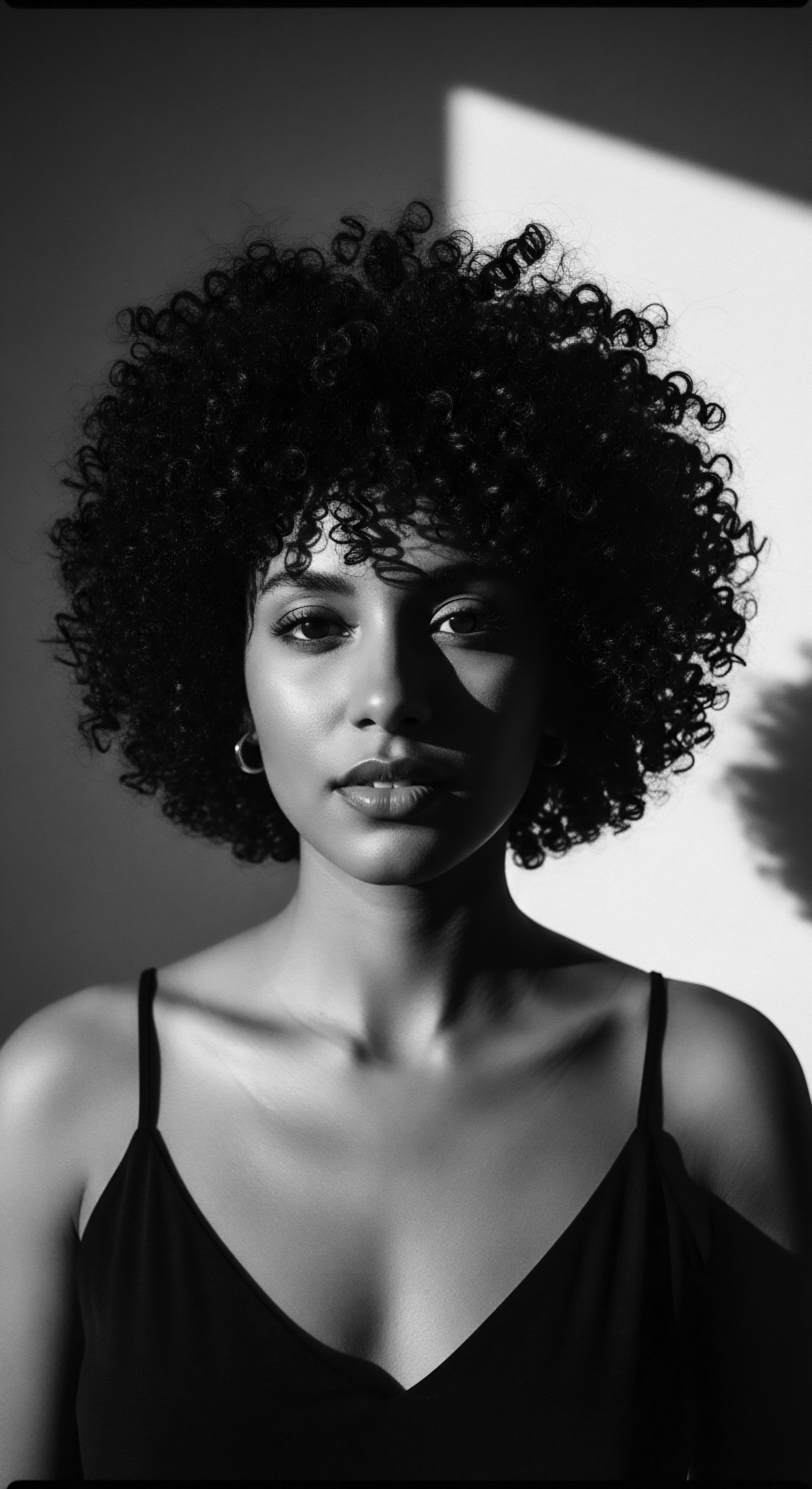
Reflection on the Heritage of Cultural Affirmation
As we draw this meditation on Cultural Affirmation to a close, the echoes of its profound heritage reverberate with enduring clarity. The ‘Soul of a Strand’ ethos, which guides Roothea’s mission, finds its very breath in this concept. From the elemental biology of the coil, shaped by ancestral climates and genetic legacies, to the intricate rituals of care passed through whispered knowledge, and finally, to the vibrant, unapologetic expressions of identity in the modern world, Cultural Affirmation stands as an unbroken thread of continuity. It is the silent strength woven into every twist and turn of textured hair, a testament to resilience, beauty, and the profound wisdom of those who came before us.
The journey of Cultural Affirmation, particularly for Black and mixed-race hair, is not a destination but a continuous unfolding, a living dialogue between past and present. It invites us to recognize that our hair is more than just protein and keratin; it is a repository of stories, a canvas of history, and a beacon for future generations. By actively affirming the heritage of our textured hair, we not only honor the sacrifices and ingenuity of our ancestors but also forge a path for a future where every coil and curl is celebrated, revered, and understood as a sacred part of the self. This commitment ensures that the living library of Roothea continues to grow, enriched by the wisdom of every strand.
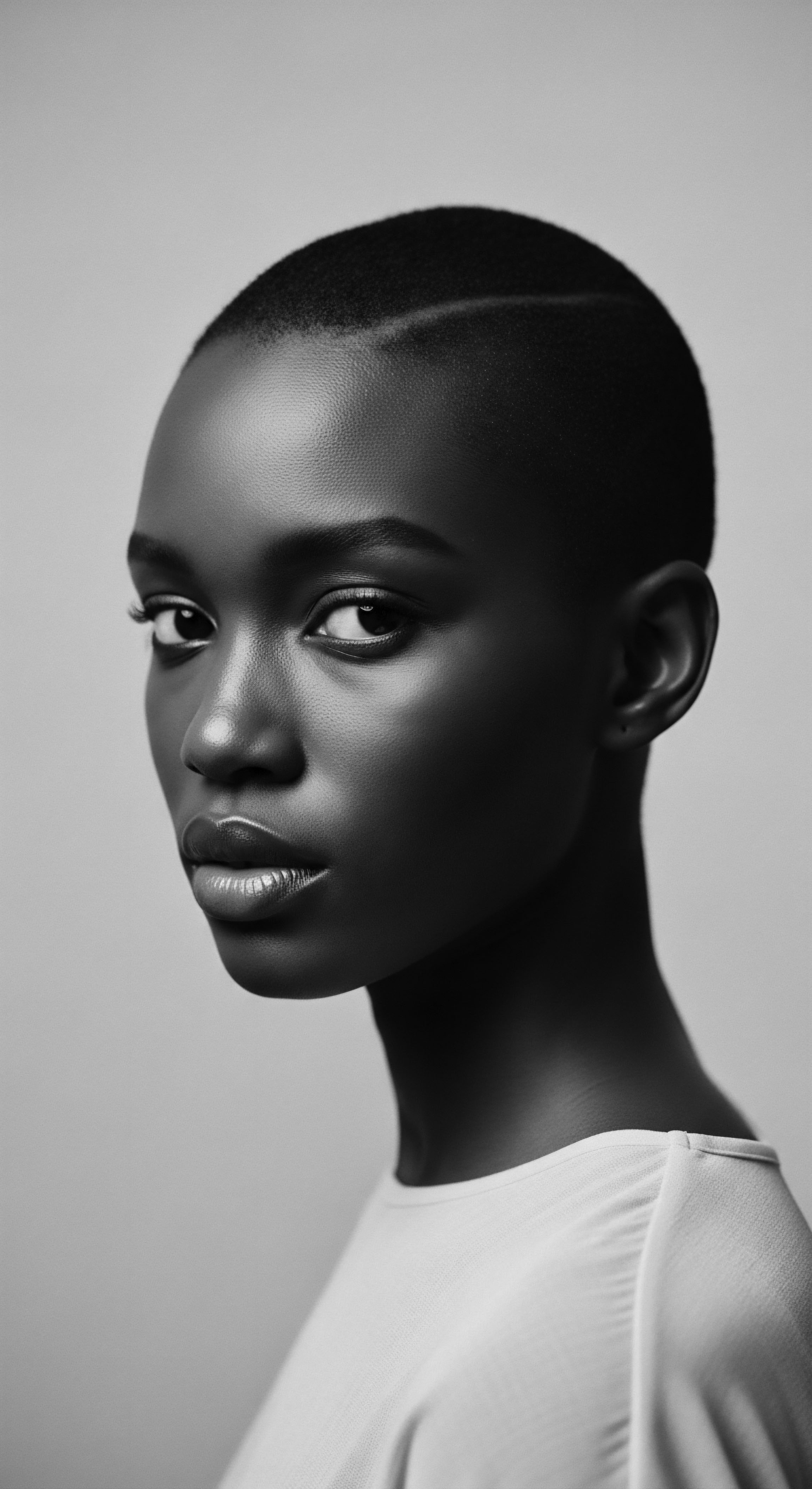
References
- Byrd, A. & Tharps, L. (2001). Hair Story ❉ Untangling the Roots of Black Hair in America. St. Martin’s Press.
- Mbilishaka, A. (2013). The Psychology of Hair. Journal of Black Psychology, 39(1), 3-17.
- Patton, T. O. (2006). Braids, Locks, and Twists ❉ The Historical and Cultural Significance of Black Hairstyles. Journal of African American Studies, 10(1), 1-17.
- Akbar, N. (1998). Light from Ancient Africa. Mind Productions & Associates.
- hooks, b. (1992). Black Looks ❉ Race and Representation. South End Press.
- Mercer, K. (1994). Welcome to the Jungle ❉ New Positions in Black Cultural Studies. Routledge.
- Sweet, F. (2005). Tignon Laws ❉ The Hidden History of Hair in Louisiana. Louisiana History, 46(1), 5-32.
- Hunter, L. A. (2011). Hair as a Source of Power and Resistance in African American Women. Journal of Black Studies, 42(3), 441-458.
- Banks, I. (2000). Hair Matters ❉ Beauty, Power, and Black Women’s Consciousness. New York University Press.
- Opoku, A. A. (1978). African Traditional Religion ❉ An Introduction. Westminster Press.
